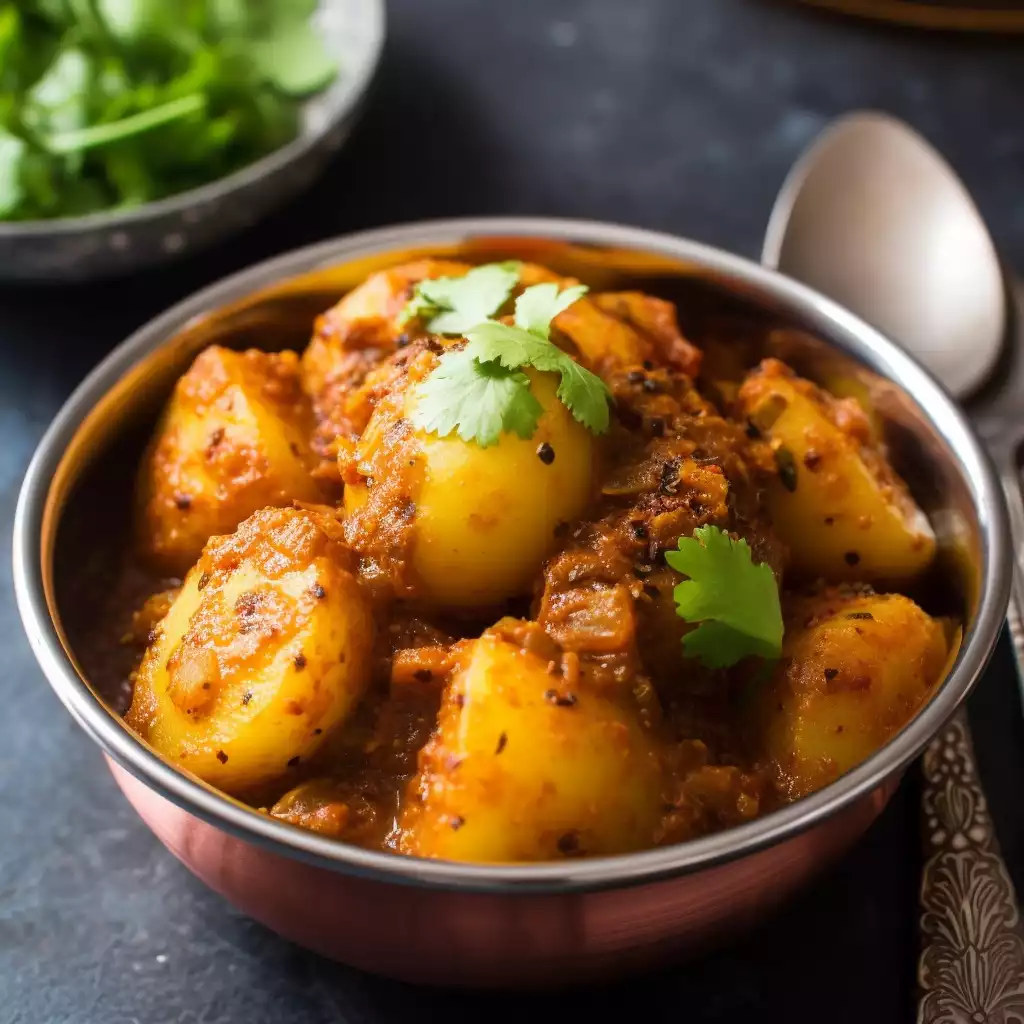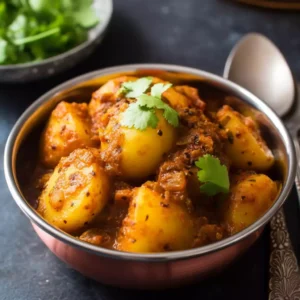
Venture into the flavors of India with this delightful dish of Bombay Potato. Hailing from the bustling streets of Mumbai, this recipe encapsulates the vibrant essence of Indian cuisine.
Originating from the rich tapestry of Indian street food, Bombay Potato offers a medley of spices and aromatics that dance on your taste buds.
Despite its exotic name, this recipe is surprisingly simple to recreate in the comfort of your own kitchen.
Expert Tip: Ensure the potatoes are diced into uniform pieces to ensure even cooking and a consistent texture throughout the dish.
Potatoes: Potatoes form the heart of this dish, providing a comforting base and a satisfying texture.
Oil: Used for sautéing and adding richness to the dish.
Onion: Adds depth of flavor and sweetness to the dish when sautéed.
Garlic: Provides a robust, aromatic flavor to the dish.
Ginger: Adds warmth and a subtle kick to the dish.
Cumin Seeds: Infuse the dish with a nutty, earthy flavor.
Coriander Powder: Adds a citrusy, herbaceous note to the dish.
Cumin Powder: Enhances the earthy flavor profile of the dish.
Turmeric: Adds vibrant color and a hint of bitterness to balance the flavors.
Chilli Powder: Offers a kick of heat, adjustable according to taste preference.
Canned Tomatoes: Provides a tangy, savory base for the sauce.
Salt: Enhances the overall flavor profile and balances the dish.
Coriander: Fresh coriander leaves add a burst of freshness and color as a garnish.
Expert Tip: Toast the cumin seeds in the oil until they become fragrant and start to crackle before adding the other ingredients. This will help release their full flavor and aroma.
Expert Tip: For added depth of flavor, consider adding a splash of coconut milk or cream to the sauce during the final stages of cooking. This will impart a creamy richness to the dish and balance out the spices.
Yes, you can substitute fresh tomatoes for canned tomatoes if desired. Simply chop fresh tomatoes and cook them down until they break down into a sauce-like consistency.
You can adjust the spice level of Bombay Potato by increasing or decreasing the amount of chilli powder used. Start with a small amount and gradually add more to taste.
Absolutely! Feel free to customize Bombay Potato by adding your favorite vegetables such as peas, carrots, or bell peppers. Simply add them to the pan along with the potatoes and adjust the cooking time as needed.
Bombay Potato can be stored in an airtight container in the refrigerator for up to 3-4 days. Reheat gently on the stovetop or in the microwave until warmed through before serving.
Yes, Bombay Potato can be frozen for later enjoyment. Allow the dish to cool completely, then transfer it to freezer-safe containers or resealable bags. Freeze for up to 2-3 months, then thaw in the refrigerator overnight before reheating.
Here are some more recipes for you to enjoy! If you my recipes don’t forget to rate and leave a comment.
If you have any recipe suggestions, please do not hesitate to ask me. A great way to stay in contact with me is through Instagram, Facebook, Twitter and YouTube. Don’t forget to tag me @CookwithNabeela in your recipe photos!

Subscribe now to receive my latest recipes directly in your inbox. Stay up-to-date and never miss out!

I love to cook! I want to share with you my favourite, delicious family-friendly recipes. I want to inspire you to create fantastic food for your family every day.
Add your first comment to this post